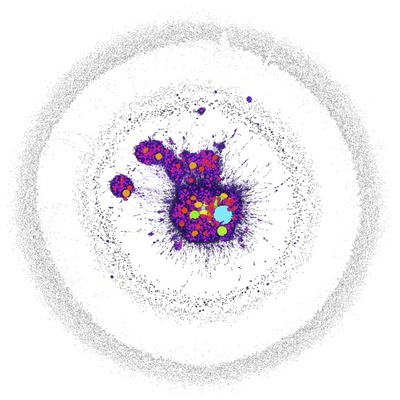Twitter reciprocal reply networks exhibit assortativity with respect to happiness
C. A. Bliss, I. M. Kloumann, K. D. Harris, C. M. Danforth, and P. S. Dodds
Journal of Computational Science, 3, 388–397, 2012

Times cited: 176
Abstract:
The advent of social media has provided an extraordinary, if imperfect, 'big data' window into the form and evolution of social networks. Based on nearly 40 million message pairs posted to Twitter between September 2008 and February 2009, we construct and examine the revealed social network structure and dynamics over the time scales of days, weeks, and months. At the level of user behavior, we employ our recently developed hedonometric analysis methods to investigate patterns of sentiment expression. We find users' average happiness scores to be positively and significantly correlated with those of users one, two, and three links away. We strengthen our analysis by proposing and using a null model to test the effect of network topology on the assortativity of happiness. We also find evidence that more well connected users write happier status updates, with a transition occurring around Dunbar's number. More generally, our work provides evidence of a social sub-network structure within Twitter and raises several methodological points of interest with regard to social network reconstructions.
- This is the default HTML.
- You can replace it with your own.
- Include your own code without the HTML, Head, or Body tags.
BibTeX:
@Article{bliss2012a,
author = {Bliss, Catherine A. and Kloumann, Isabel M. and Harris, Kameron Decker and Danforth, Christopher M. and Dodds, Peter Sheridan},
title = {Twitter reciprocal reply networks exhibit assortativity with respect to happiness},
journal = {Journal of Computational Science},
year = {2012},
volume = {3},
pages = {388–397},
key = {Social networks,emotions,hedonometrics},
}